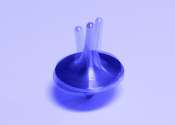3-D imaging the flavor content of the nucleon
The Jefferson Lab Hall A Collaboration, in an experiment led by researchers at Faculté des Sciences de Monastir in Tunisia, Institut de Physique Nucléaire d'Orsay in France and Old Dominion University in the United States, ...









